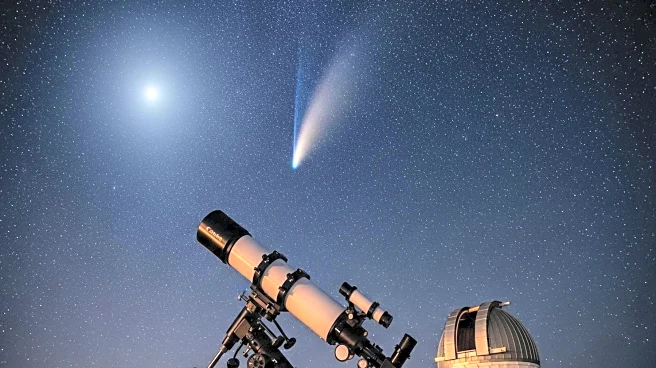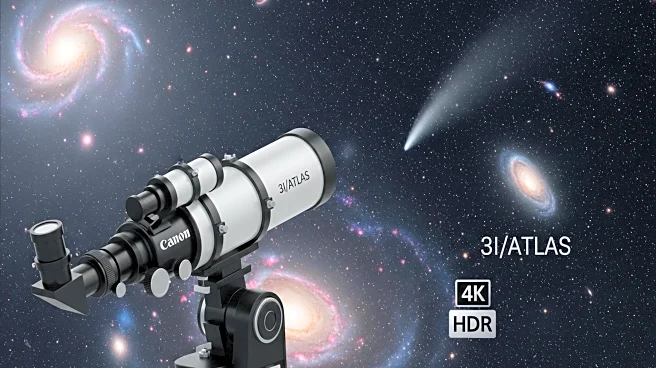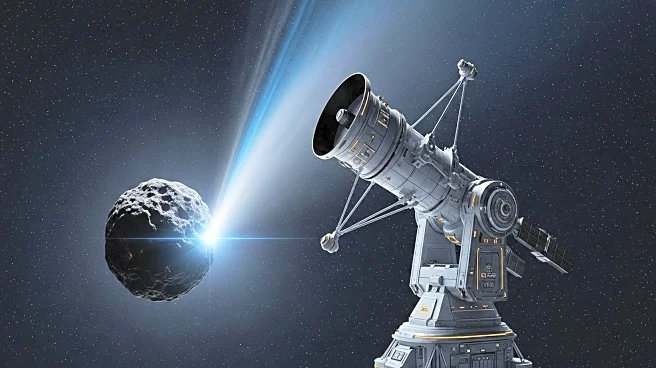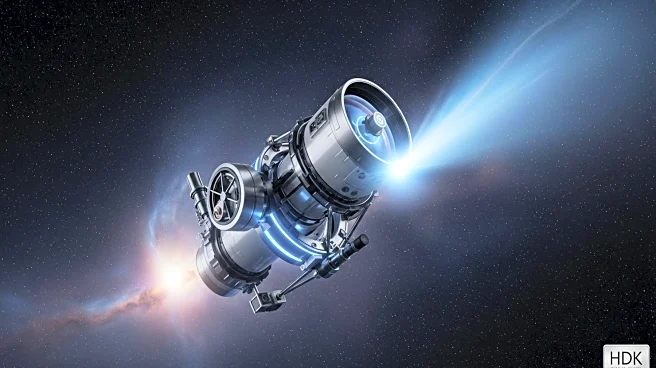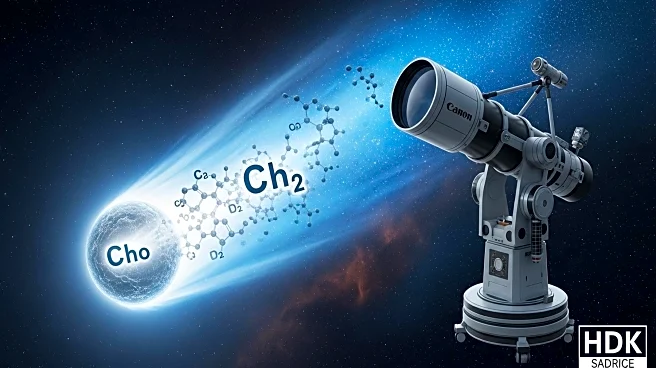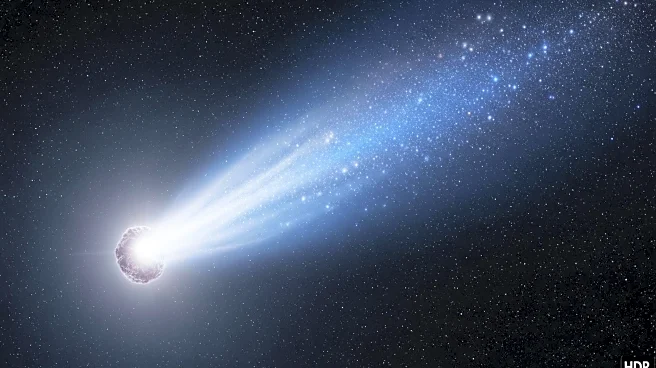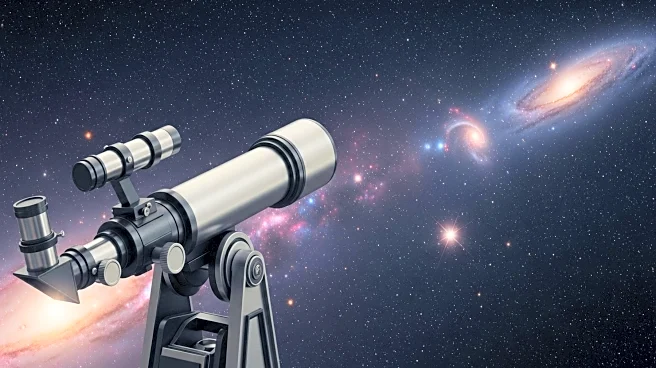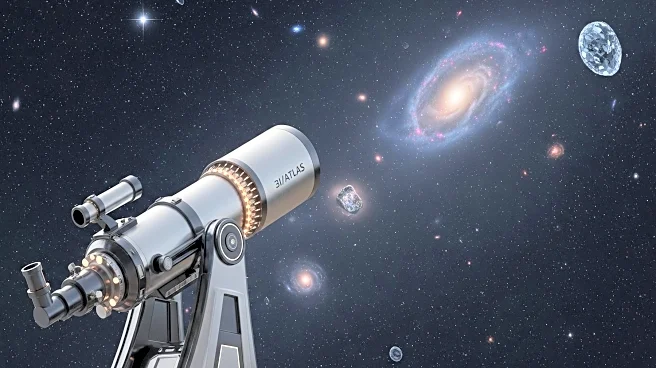What's Happening?
Astronomers at the Gemini South Observatory in Chile conducted a live webcast event to observe the interstellar comet 3I/ATLAS, a rare cosmic visitor from beyond our solar system. The event, part of the Shadow the Scientists initiative, allowed the public to witness real-time research as scientists used advanced spectrographs to analyze the comet's chemical composition. The comet, discovered in July 2025, is only the third known interstellar object of its kind. During the session, astronomers aimed to measure the comet's brightness and chemical makeup, focusing on its carbon dioxide content.
Why It's Important?
The observation of 3I/ATLAS provides a unique opportunity to study interstellar objects, which are believed to be building blocks of other solar systems. Understanding their composition can offer insights into the formation and evolution of planetary systems beyond our own. The comet's rich carbon dioxide content differentiates it from previous interstellar comets, potentially offering new information about the diversity of materials in the universe. This research could contribute to broader astrophysical studies and enhance our understanding of cosmic phenomena.
What's Next?
The Gemini South Observatory plans to host another public viewing event after 3I/ATLAS re-emerges from behind the sun in November. Scientists are considering using existing spacecraft to observe the comet during its closest approach to the sun in October. These observations will help determine the comet's activity and chemical composition as it continues its journey through the solar system.
Beyond the Headlines
The study of interstellar comets like 3I/ATLAS challenges our understanding of the universe and raises questions about the origins of life and the potential for habitable conditions elsewhere. These observations could influence future space exploration missions and the search for extraterrestrial life.
